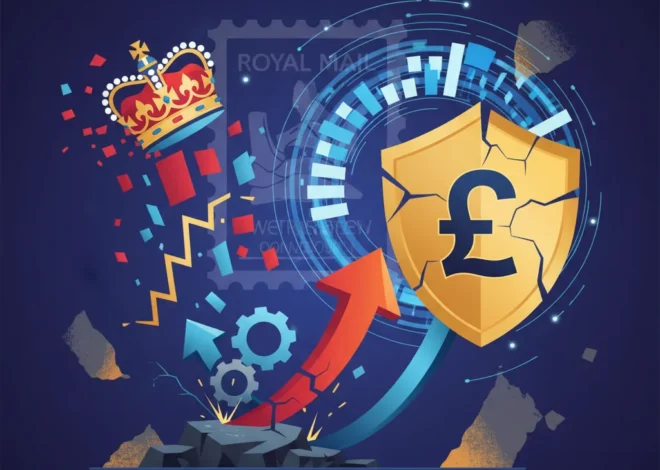
The Green Toll: Why a New EV Tax is Inevitable for the UK Economy
For years, the narrative surrounding Electric Vehicles (EVs) has been one of unmitigated progress: a cleaner, greener, and ultimately cheaper way to drive. Early adopters were rewarded with government grants, tax exemptions, and the satisfying hum of a vehicle powered by the future. But as the EV revolution accelerates, a formidable economic reality is braking hard. The UK government is now confronting a multi-billion-pound fiscal pothole, and the solution, as the BBC recently reported, involves “conversations” about a new levy on the very vehicles it has spent years promoting. This isn’t just a car tax; it’s a critical inflection point for the UK’s economy, a new variable for the stock market, and a significant challenge at the intersection of public finance and green policy.
The transition from fossil fuels to electric power is not just an environmental shift; it’s a fundamental rewiring of a century-old taxation model. The potential new tax on EV drivers is not a punitive measure against green choices, but a pragmatic, if politically fraught, attempt to plug a fiscal black hole that threatens to swallow a significant portion of the nation’s budget. For investors, business leaders, and the general public, understanding the ‘why’ behind this move is crucial to navigating the road ahead.
The £38 Billion Fiscal Cliff: Why Your EV is on the Treasury’s Radar
The heart of the issue lies in two long-standing, and incredibly lucrative, sources of government revenue: Fuel Duty and Vehicle Excise Duty (VED), often called road tax. For decades, every litre of petrol or diesel sold has included a tax that contributes directly to the public purse, funding everything from road maintenance to schools and hospitals. This system has been a cornerstone of UK public finance.
The numbers are staggering. In the 2022-23 fiscal year, Fuel Duty alone was projected to raise £25.1 billion, with VED adding another £7.4 billion. However, the UK’s independent fiscal watchdog, the Office for Budget Responsibility (OBR), has been sounding the alarm for years. In a stark 2022 report, the OBR projected that the accelerating shift to EVs would cause the value of these motoring taxes to plummet by £13 billion annually by 2030, creating a massive fiscal gap. This isn’t a slow leak; it’s a gusher that requires immediate attention from an economics perspective.
As more drivers switch to EVs, they cease paying Fuel Duty entirely. Furthermore, until 2025, EVs are exempt from VED. The policy’s success is directly cannibalizing its funding source. The government is facing a classic dilemma: the policy designed to save the planet is simultaneously dismantling a key pillar of its tax revenue structure. This is the financial reality that makes an EV tax not just a possibility, but a fiscal necessity.
Navigating the Crossroads: What Could an EV Tax Look Like?
The government’s challenge is to design a system that is fair, efficient, and doesn’t derail the transition to electric mobility. While details are scarce, several models are likely on the table, each with profound implications for drivers, the automotive industry, and even the financial technology sector tasked with implementation.
Here is a breakdown of the most likely approaches:
| Taxation Model | How It Works | Pros | Cons |
|---|---|---|---|
| Road Pricing (Pay-Per-Mile) | Drivers are charged based on the distance they travel. This could be a flat rate per mile or vary by time of day, location, and vehicle emissions. | Fairest model (you pay for what you use), can be used to manage congestion, directly replaces Fuel Duty. | Technologically complex, raises significant privacy concerns, potentially penalizes rural drivers with longer commutes. |
| Reformed VED for EVs | A new VED band structure is created specifically for EVs, potentially based on vehicle weight, price, or efficiency. | Simple to implement using the existing DVLA system, administratively straightforward. | Doesn’t account for road usage, less fair than pay-per-mile, may not fully replace lost Fuel Duty revenue. |
| Flat-Rate EV Levy | A single, annual tax applied to all electric vehicles, regardless of usage or model. | Easiest and cheapest model to administer. | Highly regressive, penalizes low-mileage drivers, blunt instrument that doesn’t influence driving behavior. |
| Tax on Electricity at Public Chargers | Applying a duty to electricity sold at public charging points, similar to Fuel Duty at the pump. | Conceptually simple and familiar to drivers. | Creates a two-tier system penalizing those without home charging (e.g., apartment dwellers), complex to administer. |
A sophisticated road pricing system, while politically contentious, is considered by many economists to be the most logical long-term solution. Its implementation would be a monumental task for the banking and fintech sectors, requiring secure, real-time micropayment systems. We could even see proposals leveraging blockchain technology to create an immutable and transparent ledger of miles driven and payments made, addressing some of the privacy concerns. This represents a significant opportunity for innovation in financial technology.
The Investor’s Dashboard: Market Tremors and Trading Signals
For those involved in investing and trading, this policy shift is more than just a headline; it’s a set of new variables that could re-price an entire sector. The announcement of a concrete EV tax will undoubtedly send ripples through the stock market, affecting a wide range of companies.
- Automotive Stocks: The most direct impact will be on car manufacturers. A poorly designed tax could be perceived as a headwind for EV sales, potentially impacting the valuations of pure-play EV companies like Tesla and Rivian, as well as legacy automakers like Ford and VW who have invested billions in their electric transition. Traders will be watching consumer demand figures closely post-implementation.
- Charging Infrastructure: Companies that build and operate charging networks could be affected differently depending on the tax model. A tax on public charging could dampen demand, while a pay-per-mile system might have little direct impact.
- Energy and Utilities: The broader shift to EVs is a long-term boon for electricity providers. A tax that significantly slows EV adoption would be a negative data point for this sector’s growth forecasts.
- Fintech and Data Companies: As mentioned, a national road pricing scheme would be a massive government contract. Companies specializing in telematics, GPS tracking, secure payments, and data analytics would be in a prime position to benefit, creating a new sub-sector for tech investing.
The key for investors is to look beyond the immediate headline and analyze the nuance of the policy. A well-designed, usage-based system could be seen as a sustainable, long-term framework that provides clarity to the market. A clumsy, flat-rate tax, however, could introduce uncertainty and negatively impact consumer sentiment, creating volatility in related stocks.
The Billion-Pound Blunder: When Green Investments Create a Financial Nightmare
The Road Ahead: Balancing Green Ambitions with Economic Reality
The impending EV tax is a microcosm of the broader challenges inherent in the green transition. The journey to a net-zero economy is not free; it involves restructuring industries, changing consumer behavior, and, crucially, re-engineering the fiscal architecture that underpins the state. According to a 2023 report from the Climate Change Committee, the UK has made significant strides in decarbonization, but policy gaps remain in critical areas like transport.
This tax forces a necessary, albeit uncomfortable, public conversation. How do we pay for public services in a decarbonized world? How do we ensure the financial burden of the transition is distributed fairly? A poorly implemented policy could be regressive, disproportionately affecting those in rural areas or lower-income households who cannot afford home chargers. Conversely, failing to act means that, ironically, the burden of road-related costs would increasingly fall on the dwindling number of petrol and diesel drivers, who are often less affluent.
Ultimately, the conversation around the EV tax is not about punishing progress. It is about ensuring the sustainability of both our environment and our public finance. It marks the maturation of the EV market from a subsidized niche to a mainstream pillar of transportation that must contribute its fair share. For everyone from the daily commuter to the City trader, the message is clear: the free ride is coming to an end, and the economics of driving are being rewritten for a new era.
The road to a fully electric future will be paved with complex policy decisions and economic trade-offs. This tax is just the first of many such challenges, a critical test of the government’s ability to manage the intricate interplay between green ideals and fiscal pragmatism.


